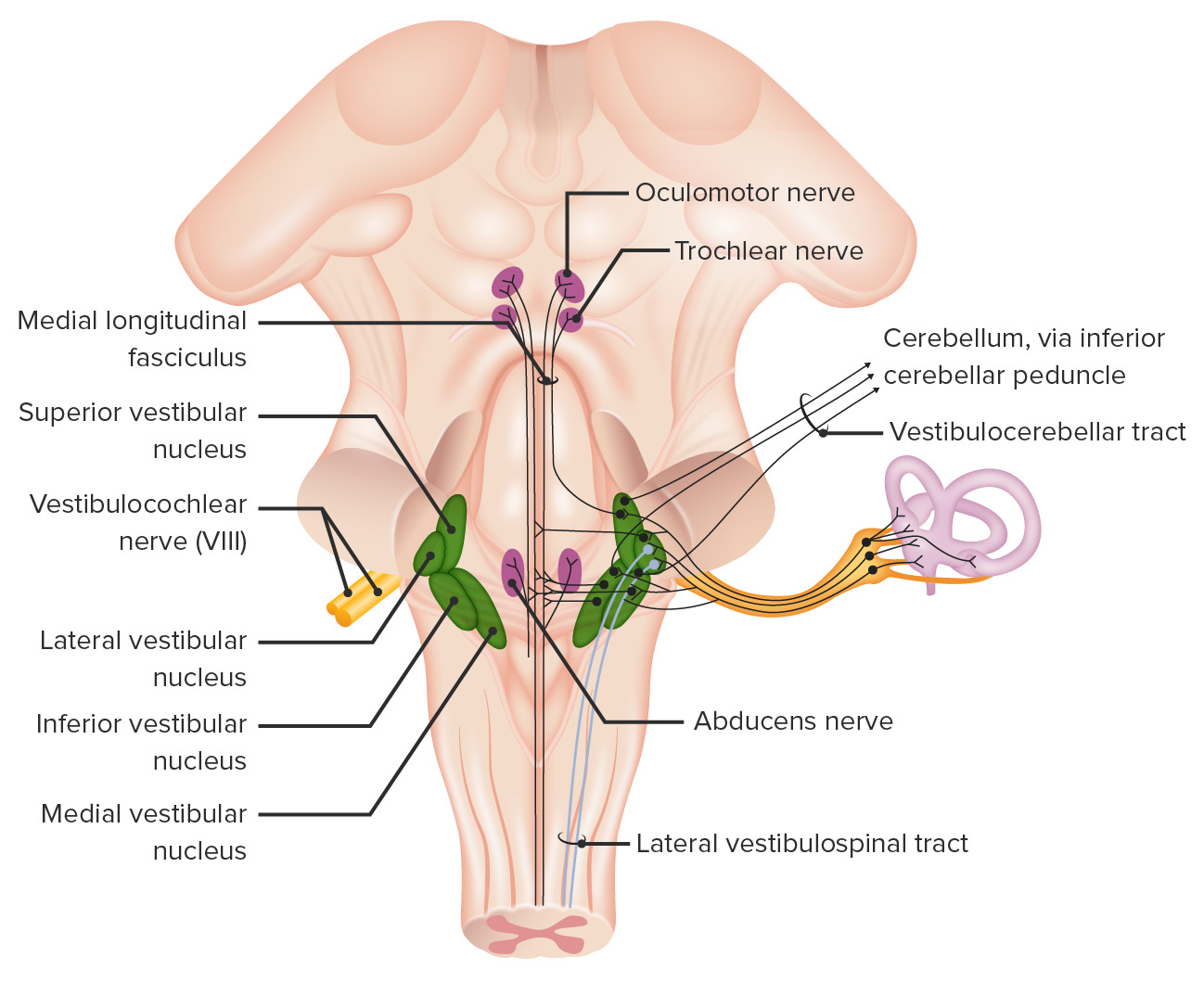Playlist
Show Playlist
Hide Playlist
Balance: Vestibular Structure and Function
-
Slides Nervous System-Hearing Balance.pdf
-
Download Lecture Overview
00:00 Vestibular structure and function. 00:05 Vestibular system also utilizes hair cells, endolymph. And they will utilize the same endolymph that comes from the structures associated with hearing such as the cochlea. 00:17 The different structures that we need to be concern with here are the three semicircular canals and the otolith organs. 00:26 And the otolith organs are the processes that are in the base of the semicircular canals. 00:33 Vestibular hair cells work a lot like auditory hair cells. 00:38 The only difference is that they always have a resting membrane potential and a resting discharge of frequency of action potentials. 00:47 So even if they haven’t been stimulated in one direction or the other, you will still have a resting discharge. 00:55 If you activate them, you’ll get an increase in resting membrane potential and you’ll get an increase in the number of volleys of action potential set to the nerve. 01:09 If you then go back down to a basal condition, you will still have a volley of action potential sent to the nerve. 01:17 If then you hyperpolarize it by bending the opposite direction, you will slow down those nerve impulses. 01:24 So here we have a couple of signals, it’s always on, and if you tilt in one direction you get depolarization then increase volleying the frequency. 01:35 And if you tilt in the opposite direction, you get a hyperpolarization and a decrease in the frequency of action potentials. 01:45 So how can we use these to better understand our direction sense? And if we are spinning in space? Our semicircular canals allow us to understand where are head is in terms of rotation. 02:04 Is it still? Is it rotating to the right or to the left? Are you spinning? These are the important items to have good information about. 02:16 How the hair cells work in semicircular canals is the hair cells are in a small pocket at the base of each of the semicircular canals known as an ampulla. 02:28 The cupula is a small gelatinous structure located above the hair cells. 02:37 Then you have endolymph that’s gonna be passing through these. 02:41 And as the endolymph deforms the cupula, it will bend the hair cells. 02:48 How do you know which direction this is going to occur? If you are having the head rotated in one direction, the fluid will start moving in that direction. 02:58 And as that fluid moves through the semicircular canals, that is what will bend or cause the cupula to move which then bends your hair cells. 03:08 You will have some hair cells that are facing in the direction having its tallest component in the direction of the fluid flow. 03:19 And then you’ll have some who have this tallest component in the opposite direction. 03:24 So you’re always gonna get some signal. 03:26 Sometimes you’re gonna get from the same ampulla structure. 03:30 Some hair cells are gonna give you a positive signal of their depolarizing and some will give you a hyperpolarizing. 03:39 This is then summed and you can have a coordinated response to that particular stimulus. 03:46 When the head is rotated in one direction, the endolymph will be displaced in the direction opposite to that of the rotation, bending the cupula and hair cells. Once the speed of the head and endolymph are equal, the cupula will swing back to an upright position. If the head is suddenly stopped, the endolymph will continue to move in the direction of rotation, and the cupula is bent in the direction opposite to acceleration.
About the Lecture
The lecture Balance: Vestibular Structure and Function by Thad Wilson, PhD is from the course Neurophysiology.
Included Quiz Questions
Which of the following occurs during rotation of the head?
- The endolymph moves in the opposite direction of the rotation.
- Some of the hair cells bend in the same direction, causing them to hyperpolarize.
- The endolymph moves in the same direction of the rotation.
- Some of the hair cells bend in the opposite direction, causing them to depolarize.
- The resting discharge rate does not change.
Which of the following is NOT a part of the vestibular system?
- The malleus
- The utricle
- The semicircular canals
- The saccule
Customer reviews
5,0 of 5 stars
| 5 Stars |
|
5 |
| 4 Stars |
|
0 |
| 3 Stars |
|
0 |
| 2 Stars |
|
0 |
| 1 Star |
|
0 |





